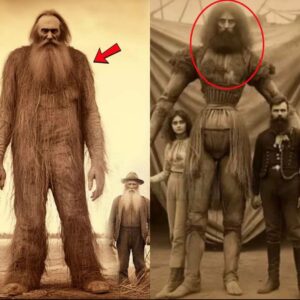Giants in Mythology and History
Since ancient times, giants have appeared in the legends of many cultures around the world. In Norse mythology, giants (Jotnar) are closely associated with stories of the god Thor. In the Bible, the Nephilim are described as “giants” from an era of chaos. In Asia, myths from India to China also mention colossal beings far exceeding humans in size and strength.
These tales are not merely myths; they spark the curiosity of modern researchers, prompting the question: Could there have been actual giants or giant-like creatures in history?

Evidence from Archaeology
Today, archaeologists and paleontologists are searching for evidence through fossils, skeletal remains, and other relics. Some discoveries have drawn significant attention:
- Giant Skeletons: In various regions, from North America to the Middle East, unusually large skeletal remains have been unearthed. Some theories suggest these might belong to giant creatures from prehistoric times.
- Fossils of Gigantic Animals: Fossils of massive creatures like the Megatherium (giant ground sloth) or Paraceratherium (giant hornless rhino) reveal that Earth was once home to animals far larger than any species today.
However, there is no definitive evidence confirming the existence of a “giant human species” as described in myths.
Scientific Explanations for Giants
Based on scientific research, there are plausible explanations for the origins of giant myths:
- Medical Conditions: Individuals with gigantism or acromegaly, conditions causing abnormal growth, may have inspired stories of giants. These individuals often had heights far exceeding the average human.
- Misinterpretation of Fossils: In ancient times, large fossils might have been misidentified as giant human bones. For example, elephant fossils were often mistaken for the remains of giants.
- Cultural Significance: Myths about giants often carry symbolic meanings, representing strength, danger, or challenges beyond human capabilities.

The Importance of Studying Giants
Research into fossils, skeletal remains, and myths about giants not only helps uncover historical truths but also expands our understanding of Earth’s evolution and environment.
- Reconstructing the Past: By analyzing specimens, scientists can recreate images of ancient species and gain insights into past climates and ecosystems.
- Cultural Connection: Tales of giants reflect the imagination and deep beliefs of our ancestors about the natural world.
Conclusion
Giants, whether they existed in reality or solely in mythology, remain a fascinating topic that sparks human curiosity and research. Archaeological and scientific evidence has opened new perspectives, shedding light not only on the existence of massive creatures but also on how ancient people perceived and explained their world. While the truth about giants may still elude us, the journey to uncover it enriches humanity’s collective knowledge.
